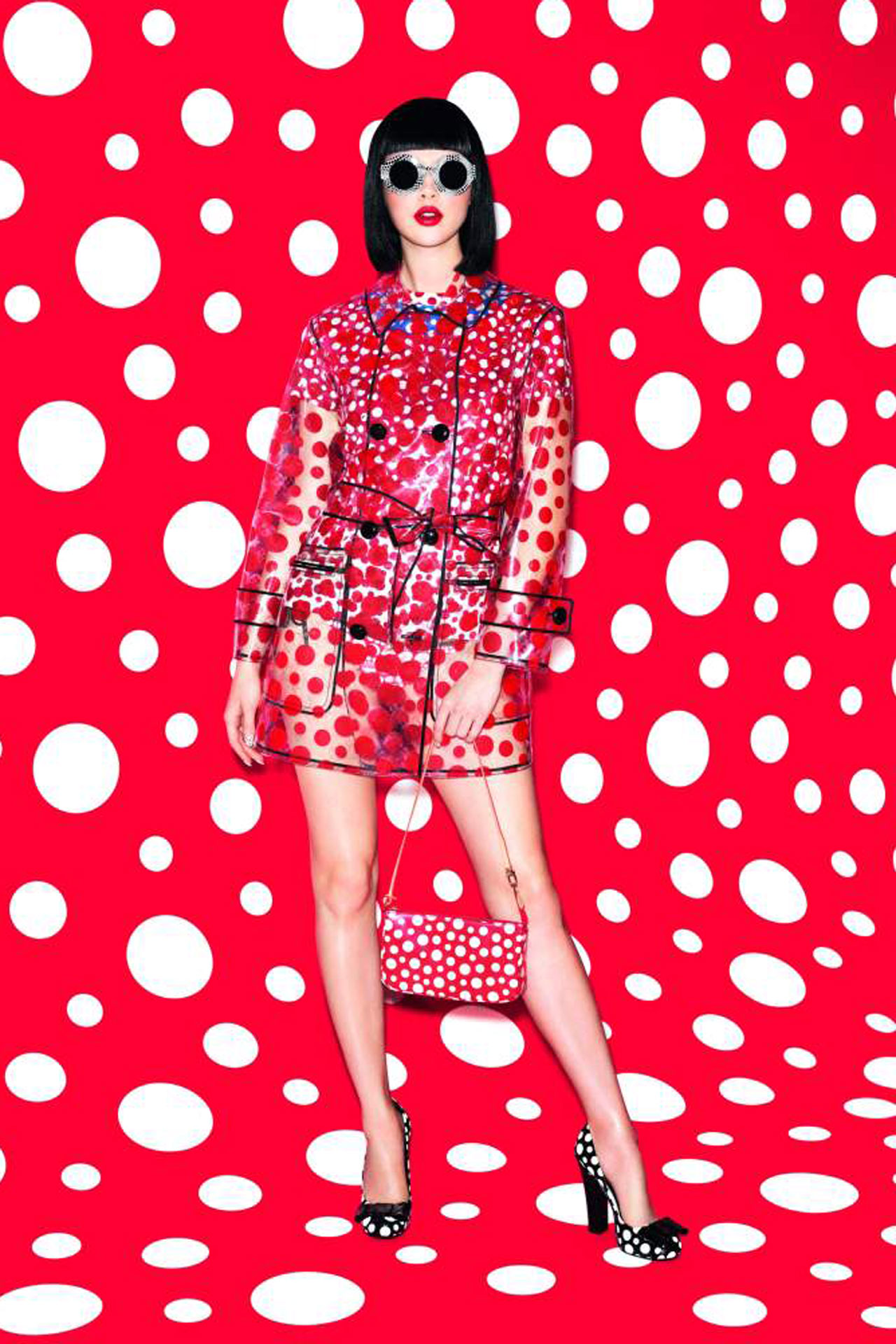The Changing Conception of Luxury in Japan
In Japan, a country that once saw more luxury consumption of fashion brands like Louis Vuitton and Chanel than the rest of the world combined, there was a marked change and rethinking of both the concept and practice of luxury that came with the bursting of the economic bubble around 1991 and the decades of its aftermath. One key sensibility that rose over this time was that of “Slow-Life”, an obvious reaction against the hectic life of the Tokyo metropolis but also a kind of anti-futurist aesthetic with a manifesto, dedicated magazines, and even a colour palette. Just as Marinetti had promised the world’s magnificence had been enriched by the new beauty of speed, and of great crowds excited by work, pleasure, riot, and the multicoloured, polyphonic tides of revolution, Slow life promises a similar all-encompassing beauty, but this time a sustainable, ecological, monochromic, sublime of oneness with the natural and with time itself, in an age when Japan had outgrown growth. The slowing down of time came with a particular look that was marketed as an anti-fashion but soon became the latest ultimate luxury. The ritualization and aestheticization of everyday life has a long history in Japan, with plenty of motifs and rhetoric to conscript into the construction of this new luxury; from wabi-sabi, the aesthetic of incompleteness, asperity and imperfection, to the 1332 classic, The Harvest of Leisure, praising anti-materialism and the pleasures of transience. Japan was in some ways already a nation with a yearning for the slowness and perfection of life’s little details that had, in popular imagination, been robbed by a foreign-imposed modernity.
Ironically this became an extremely marketable form of luxury fashion. Selling the image of a zen-arcadian pastoral, with accompanying trimmings like natural linens, indigo dying, and the ingenuous integrity of natural surfaces in clothing and interiors, was also seen as restoring an authenticity missing in the growing ubiquity of luxury European brands. Being authentic came to be understood as a greater luxury than the unsubtle branding of logos and monograms. As China, Japan’s old cultural and new economic rival, enjoyed their own economic miracle and repeated Japan’s 1980s hunger for European luxury fashion, Japanese consumers and designers sought ever more subtle forms of distinction, seeking a new luxury that transfigured conspicuous consumption: a luxury of slowness.
Yayoi Kusama and Abstraction in Fashion
Abstraction remains one of the more difficult concepts of art history to apply to fashion. And yet as one of the key directions of twentieth century High Modernism its influence is impossible to deny. Kusama Yayoi is an artist who stands amongst the most important innovators of visual abstraction and who also always included fashion within her creative output, opening her first boutique in 1968, and continuing to collaborate in fashion today.
This research is focusing on two different stages in Kusama’s fashion output; the New York years when she used abstract notions of the body and of clothing to create avant-garde pieces, to compliment a body of work which utilized outdoor nude performances, extraverted fashion, and guerrilla-like shock tactics, to question social norms in keeping with an avant-garde agenda. Many of her designs, such as Squid Dress(1968), which cut holes to expose the wearer’s breasts, buttocks, and genitalia, or her Phallic Dress(1968) with stuffed phallic protrusions, her Orgy Dress(1968) for four people, all predated and foreshadowed more celebrated uses of these provocations and innovations by Rei Kawakubo and others, placing her truly amongst the fashion avant-garde. A second stage came with her rediscovery in the twenty-first century as a member to the pantheon of abstract expressionists, along with Jackson Pollock and Mark Rothko, who had produced an immediately recognizable abstract style. She herself became a fashion icon with a fluorescent-hued wig and vivid polka dot dresses. And then in collaboration with designers such as Marc Jacobs at Louis Vuitton used her key stylistic themes; infinite repetitions, infinity nets, lyrical fantasy, vivid pop-colours, cosmic vision, and a play between monochrome and polychrome, as motifs in high-end fashion. She remains one of most important figures in the breaking down of the conceptual barriers between fashion and art.
Japanese Modernity and Fashion
This research examines the entire sweep of Japanese clothing history, from the sophisticated fashion systems of late-Edo period kimonos to the present day, providing possible theories of how Japan made this fashion journey and linking current theories of fashion to the Japanese example. From the awkward Edwardian tailcoats and the bustle dresses of the 1870s first encounters with Western clothes, to the suave and chic modern boys and flapperesque modern girls, of 1920s and 1930s, the story of modern Japanese fashion is as fascinating as it is unique. The modern boys and the modern girls, known as mobo and moga in Japan were much discussed and referenced despite their relative scarcity demonstrating both the fear of and enthusiasm for all things foreign, especially in the immediate and confronting form of youth fashions. It is in this remarkably idiosyncratic aesthetic history that is the foundation for the distinct and revolutionary styles of the Japanese designers and myriad subcultures of today.
From the time of the Meiji Restoration in 1868 Japan was suddenly exposed to a range of clothing styles and philosophies that its previous isolation had concealed. The necessity to engage rapidly with a radically different dress ideology was as intense and as important to Japanese modernity as was the shock of new art and foreign technology. Japan was unique in its experience of adopting, appropriating and restyling foreign clothes because it did so without colonization and before full-scale industrialization. Through examination of this unique aesthetic history this book seeks to calibrate the canon of fashion theory to account for the Japanese experience and also to demonstrate that far from being a hit and miss side-show in the great circus of human thought, clothing fashions operate in such a way as to echo the larger mechanisms of aesthetic change and are indeed central to the processes and legacy of modernity. In addition it seeks to demonstrate the existence of other modernities, and different fashion histories beyond the canon of European and American dress narratives that dominate nearly all interpretations of the practices, styles, and institutions of clothing in the modern age. The Japanese experience runs contrary to traditional fashion theories of sartorial modernity and is it thus even more important that its fashion history becomes part of the wider discourse of world fashion.
Sartorial Modernity in East Asia
It is a primary part of my research agenda to extend my analysis of Japanese sartorial modernity to other areas in Asia and particularly to China and Korea. The history of clothing in Asia and the way it reflects and influences social change is a greatly neglected area of research because of the dominance of Western narratives of fashion history. Further, the small number of comparative studies of the social history of modernity across Asia as opposed to nation specific studies are unrepresentative of its importance and the insights to be gained from a wider approach. Starting with the major centres of Hong Kong, Shanghai and Seoul and continuing into the farthest and final locales to be effected by modernity it is my intention to commence researching a comprehensive map of Asian clothing modernity and the accompanying social history. Clothing histories of Asia tend to be either contemporary or traditional with no account for the bridging period where Asia engaged with radically different clothing aesthetics which came with foreign technology and foreign political influence.
Kon Wajirō
Over the course of my recent research into sartorial modernity in Japan it became clear that a major absence in the study of Japan in the modern era was that relatively little, and nothing comprehensive, exists in English on Kon Wajirō. While often referenced, notably by H.D. Harootunian, Kon is normally associated with architecture and this eclipses his also very important work as an urban researcher and artist. He represents that overlap of art as research and research as art, and is a significant element in Japanese modernity particularly in the Taishō era. Kon’s contribution to how the changing consciousness of modernity evolved in Japan, and the role that everyday life plays in history should be more widely accessible and his avant-garde notions of what constituted art and what was worthy of serious research, long before those ideas became popular, should be more widely recognized.
Kon observed, in countless studies conducted in the 1920s and 1930s, that innumerable identities were being played out daily on every street corner where people could assume different subject positions by the way they held and smoked cigarettes, dressed, styled their hair, and walked, and by the choices they made for play and consumption in the Ginza. It was Kon who recognized, perhaps before anyone, the shift from notions of identity based in civilization of the Meiji period to notions of identity based in culture. And certainly his observations constitute a prelude for the myriad present day manufactures of identity in Japan.
According to Harootunian, Kon’s interest in everydayness predates similar interest in European and American scholarship, making him an integral thinker not just for Japan but for global understandings of modernity. Kon’s own programme Modernologio (kōgengaku) remains largely untranslated unlike Walter Benjamin’s Arcades Project which is now accessible in English—a Eurocentricity in the interpretation of modernity which should be rectified.
The Shiseidō Gallery produced an exhibition on Kon Wajirō in March–April 1993, again without an English catalogue, thus limiting its impact. This exhibition was in recognition of the interest that the design department of Shiseidō had in Kon’s studies of modernity which they recognized as avant-garde and in keeping with their vision of a modern aesthetic. Shiseidō and its Taishō era design department, being very instrumental in the collective vision of a modern Japan (based on the Taishō value of culture rather than the Meiji value of civilization) continued the Meiji precedent of leading through the provision of example.
Fashion and Authoritarism
This research examines the transition in fashion following the end of the Soviet period in Mongolia. It is particularly concerned with the aesthetic choices made during and after a sudden change in political identity and the choices of a place which so keenly feels itself to be at the very furthest fringe of things, and the last place the new trends of the world call on. Establishing what is universal about the trends in clothing in an open, late-capitalist experience and what is culturally specific to Mongolia is useful to interpret to what degree universal experiences—like modernity—have appropriate clothing forms and to what degree those forms are arbitrary.
In the early period of the Mongolian People’s Republic there were inspectors for the essential items of modernity—underwear, combs, and bras—the absence of which could have you sent to the party office for a lecture on ‘civilisation’. From the Democratic Revolution the difficult transformation to capitalism and its associated freedoms allowed for an infatuation with American popular culture and a commercial reengagement with China with Mongolia receiving the seconds of the seconds of the world’s clothing. This was coupled also with the revival, reinvention and modification of traditional clothing with past and ongoing equine influences.
The new wave of advertising and the advertising driven imperative to engage in new cosmetic practices and self-styling along with the challenge to social structures, gender relations and notions of morality collide in interesting and unique ways. Mongolia is a fascinating place from which to calibrate the stages and systems of fashion in modern society not least because of its remoteness and impoverishment. As with much of the Asian experience of sartorial modernity it serves to question and challenge our primarily Western notions of the sequence and causality of modern fashion.











